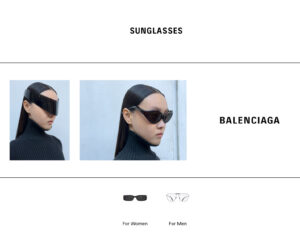A Sharp New Concept in the Midst of London
Pull & Bear has always thrived on forward energy. From its skate-inspired silhouettes to its unpretentious price points and youthful optimism, the Inditex-owned label has spoken directly to a generation of shoppers that sees fashion as an extension of motion—cultural, personal, urban. On April 11, 2025, the brand pushed that mission even further with the unveiling of its new flagship store at 213 Oxford Street, London.
Spanning over 1,391 square meters across two floors, the new location is more than just retail—it’s a future-forward arena of expression. With luminous white interiors, experimental fittings, and sensory-focused spatial design, the store reflects Pull & Bear’s commitment to digitally fluent, experientially driven fashion consumers. It marks a return to physical retail, not as a transactional hub, but as a playground—a place to discover, to dwell, to dream.
Reinventing the Flagship
Flagship stores, traditionally, have operated as brand temples—grand showcases of a label’s visual DNA. With this new space, Pull & Bear breaks that mold. Instead of monumentalism, the store embodies accessibility and interaction. Think: less shrine, more ecosystem.
Upon entry, customers are greeted by an environment that feels at once clinical and creative. White stucco walls and brushed steel installations set the tone—inviting minimalism punctuated by textural complexity. A series of modular display structures, resembling large-format lightboxes, divide the store into flexible zones. These are not mere racks—they’re gallery-like compositions, shifting fluidly between functional retail and visual curation.
The design, developed in flow with a Madrid-based studio specializing in sustainable commercial architecture, leans into biophilic lighting, dynamic movement mapping, and responsive materiality. This isn’t just a store—it’s a system in motion, tailored to the ways people shop, browse, rest, and return.
Digital Meets Physical: A Seamless Shopping Model
The Oxford Street flagship is not merely a store—it’s Pull & Bear’s first hybrid commerce venue, where technology is not a feature, but a framework. Throughout the space, shoppers encounter a suite of touchless tools, digital assistants, and data-backed navigation systems.
- RFID-enabled fitting rooms automatically recognize products brought in, offer styling suggestions on integrated mirrors, and allow real-time size/availability checks.
- QR-coded fixtures across the store allow customers to save, scan, or digitally transfer their selections to a mobile cart.
- Augmented reality installations in the accessories and footwear section allow visitors to virtually try on bags, trainers, or sunglasses through motion capture.
- A centralized digital concierge desk helps customers order in-store items for at-home delivery, or retrieve online orders without waiting in traditional queues.
The result is a hybrid model that bridges digital efficiency with tactile pleasure—a retail language fluently spoken by Gen Z and younger millennials.
The Mood: Urban Sanctuary, Not Consumption Temple
One of the most unexpected qualities of the new Pull & Bear flagship is how calm it feels. Unlike its fast-fashion competitors—many of whom rely on sensory overload—this store feels curated with intentional breath.
Music is low, ambient, leaning more toward art installation than party playlist. The color scheme is a palette of soft khaki, silver, and cream, with subtle pops of blue neon signaling collection zones. The changing rooms are spacious and softly lit, echoing more of a wellness environment than traditional retail cubicles.
Strategically placed lounging areas, complete with charging stations and brand-commissioned design books, reinforce the idea that this is a space to stay—not just to buy. The message is clear: Pull & Bear isn’t pushing product. It’s inviting presence.
Spatial Identity: A Walk Through Future Fabric
Each section of the flagship is curated around specific product categories, but more importantly, around emotional tempos. The first floor is energetic—graphic tees, denim drops, tech-fabric outerwear. It feels like the entrance to a skate park fused with a Tokyo concept shop. The second floor slows down—knitwear, linen shirts, tailoring-inspired sets. It’s contemplative, laid-back, sunny.
In between are seasonal vignettes, which act as editorial pop-ins—miniature installations that highlight capsule drops or themed edits. For SS25, this includes:
- “Desert Signal”: A faded-khaki and burnt-orange section featuring utility parkas, cargo skirts, and clay-toned sandals.
- “Off-Season Court”: A tennis-inspired drop blending preppy polos and netted mesh shorts in pastel colorways.
- “Digital Mutiny”: A bold unisex corner spotlighting graphic tanks, industrial pants, and translucent vinyl accessories—modeled after urban cyberpunk streetwear.
The interplay of color, light, and texture turns these collections into storyworlds, each corner an invitation to enter a new fashion narrative.
A Street-Level Statement
The new flagship does more than bring the inside of Pull & Bear’s vision to life—it reasserts the brand’s presence on the literal street. Oxford Street, long seen as the commercial artery of London, has experienced major turbulence in recent years. Post-pandemic closures, shifting rent structures, and the decline of department stores have left many flagship spaces shuttered or soulless.
With this opening, Pull & Bear makes a bold statement: the street still matters. Physical spaces are still vital. But their role has changed. They’re not just outlets—they’re community nodes, cultural activators, brand laboratories.
Outside the store, street art installations curated in collaboration with local East London illustrators offer QR-coded murals that link to limited-edition pieces. A series of rotating pop-up carts—offering anything from zines to recycled tote bags—bring spontaneity to the sidewalk. Even the storefront glass carries programmable displays that shift with dayparting schedules, syncing the exterior’s mood with sunlight and foot traffic.
The Sustainability Thread
Though not overt, sustainability weaves quietly throughout the flagship. From LED lighting and recycled aluminum framework to fitting rooms lined with post-consumer cotton panels, the architecture reflects circular thinking. Many of the display platforms are built from compressed hemp fiber and biodegradable resin, and the packaging zone offers textile-based wrapping options.
An in-store recycling wall allows shoppers to drop off unwanted clothing in exchange for Pull & Bear credits, which can be used on future purchases or donated to youth shelters.
Even the staff uniforms, designed by an in-house capsule team, are crafted from deadstock denim and digitally printed cotton—functional, ethical, and visibly tied to the store’s broader purpose.
More Than Shopping: Culture, Tech, and Play
Throughout the next year, the Oxford Street flagship will serve as a rotating culture lab, housing panel talks, DJ sets, styling workshops, and augmented-reality pop-ups. Planned collaborations include:
- A “Future Garment” symposium, led by fashion tech students from Central Saint Martins.
- A capsule drop with UK illustrator Joey Yu, launching in-store with a digital gallery takeover.
- Monthly “Afterhours at 213” events, where the store becomes a nocturnal space for DJs, stylists, and local creators.
This isn’t just a store—it’s a social platform with walls. An arena for creative exchange, live trend-testing, and consumer feedback. By embedding cultural activation into its architecture, Pull & Bear ensures the flagship isn’t just visited—it’s revisited.
Impression: Soft Power Through Smart Design
Pull & Bear’s Oxford Street flagship proves that physical retail isn’t dead—it just needs relevance, rhythm, and redefinition. This isn’t about maximalism. It’s about movement, modulation, and feeling the customer where they are.
Here, the brand doesn’t rely on logos or trend-chasing. It leans on materiality, mood, and maneuverability. It lets people choose their own pace, offering moments to pause or moments to perform.
If the next era of fashion retail is about place-making, then Pull & Bear has delivered a space not just to shop, but to inhabit. Not just to browse, but to be seen browsing. It’s a future-minded playground with analog warmth—tactile, intentional, and alive.
No comments yet.








